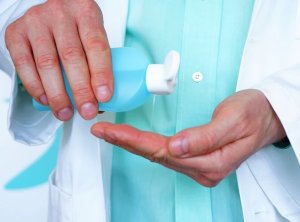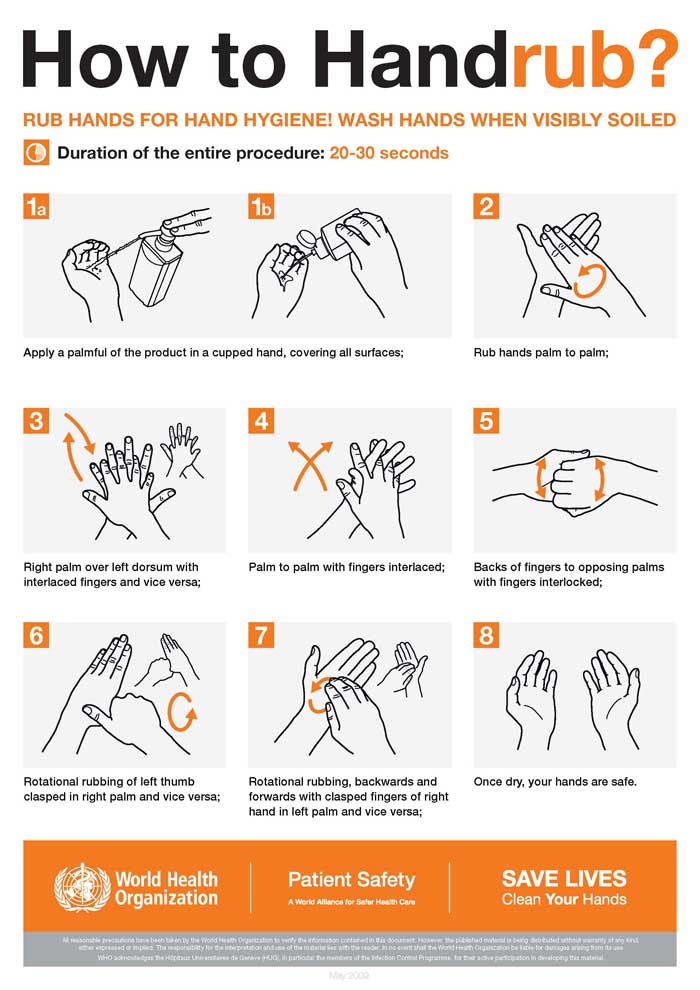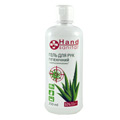 In the current difficult epidemiological situation, observing proper hand hygiene is more important than ever. The best way to protect yourself from germs is to thoroughly wash your hands with soap. However, there are situations when water and soap are simply unavailable. In this case, hand sanitisers come to the rescue. Let’s figure out what hand sanitiser is, how it works and how to use it properly.
In the current difficult epidemiological situation, observing proper hand hygiene is more important than ever. The best way to protect yourself from germs is to thoroughly wash your hands with soap. However, there are situations when water and soap are simply unavailable. In this case, hand sanitisers come to the rescue. Let’s figure out what hand sanitiser is, how it works and how to use it properly.
The term “hand sanitiser” (also known as hand antiseptic, hand disinfectant or hand rub) refers to a type of disinfectant used to prevent the transfer of pathogens through touch, as well as to observe hand hygiene in the absence of water and soap. Hand sanitisers were introduced back in the 1960s, but for about three decades they were used only in medical settings. Hand disinfectants for personal use were first popularised in the early 1990s.
According to the World Health Organisation (WHO), regularly washing your hands with soap for at least 30 seconds ensures reliable protection from various pathogenic bacteria, fungi and viruses, which can cause various infectuous diseases. Ideally, it should be enough to keep your safe, but we don’t always have immediate access to running water and soap. In such cases, hand sanitiser will protect you from infections until you get a chance to properly wash your hands.
Hand sanitisers come in many forms and are produced by various brands, but all of them have one thing in common: each hand sanitiser contains an antiseptic agent as its key active ingredient. Hand sanitiser formulations are usually based on some kind of alcohol (ethanol, isopropyl alcohol, n-propanol, or their combination). There are non-alcohol based formulations containing triclosan or benzalkonium chloride, but they are less effective than alcohol-based versions (for example, triclosan doesn’t kill viruses and may cause antimicrobial resistance) and so they aren’t a good alternative to hand washing.
Alcohol-based hand sanitisers must contain at least 60% alcohol to be effective. In addition to alcohol, hand sanitisers usually contain other ingredients, such as additional antiseptics, sporicides (to eliminate bacterial spores), gelling agents, emollients, distilled or sterile water, and sometimes fragrances, colourants or surfactants. Common moisturising agents found in hand antiseptics are glycerine and propylene glycol. They keep the skin of the hands hydrated and prevent itching and flaking.
Alcohol-based hand sanitisers for personal use are most often available in the form of gels and sprays. Gels are considered a better option for personal use due to their thick, viscous texture, which allows to spread hand sanitiser all over your hands without missing a spot. Antiseptic gels usually come in small plastic bottles with flip-flop caps, which you can carry around and use whenever you need. They also come in larger bottles with pump dispensers, which are designed for household use.
Antiseptic sprays are convenient to spray directly on large surfaces. They don’t leave the skin feeling sticky, like some antiseptic gels might. Sprays, especially those that come in large bottles, are considered more convenient for professional use, for example, in hospitals and healthcare facilities, beauty parlours, offices, shops, etc.
How to Use Hand Sanitiser Properly
Hand sanitisers containing at least 70% alcohol – regardless of their form – are able to kill 99.9% of the bacteria on your hands, but only if you use them properly. For example, you need to rub them into your skin for at least 20–30 seconds, making sure that your skin stays wet with sanitiser the whole time.
For effective disinfection, you need to use at least 3 ml sanitiser and spread it all over your hands and wrists, paying special attention to the so-called “critical” spots that are easy to miss, such as the spaces between your fingers, thumbs, fingertips, nail walls, and the skin under your nails.

If the skin of your hands is visibly soiled, hand sanitiser won’t be as effective as it should be. So you should really find an opportunity to wash your hands with soap after petting animals or soiling your hands with earth, rust, various chemicals or grease. After washing off dirt and grime, you can use hand antiseptic for extra protection.
Currently, due to the COVID-19 pandemic caused by SARS-CoV-2 (a new type of coronavirus), consumer demand for hand sanitisers has grown significantly, and many cosmetic brands have begun to produce them. In our online shop Organic Store, you can find hand sanitisers produced by reliable companies and brands, such as Hand Sanitar and Green Pharmacy. Their compliance with the existing quality and safety requirements is confirmed by certificates.
Hand Sanitisers in Our Store
Hand Sanitar Hygienic Hand Gel with Antiseptics, 250 ml |
